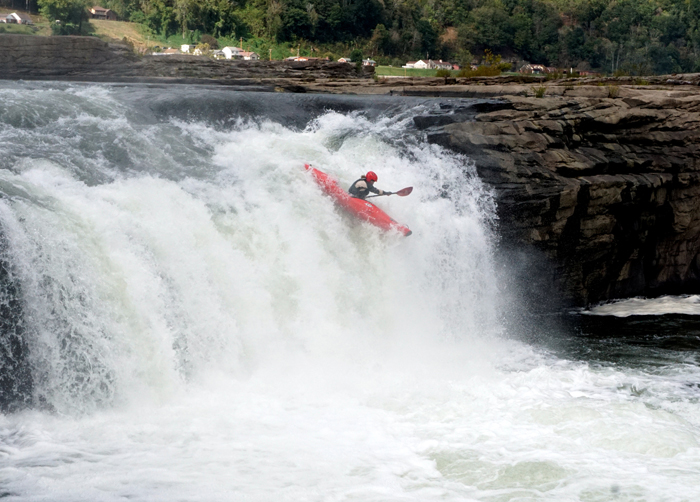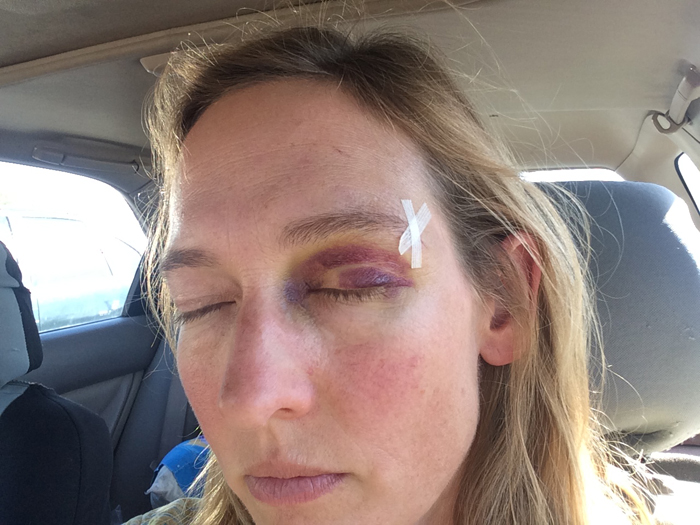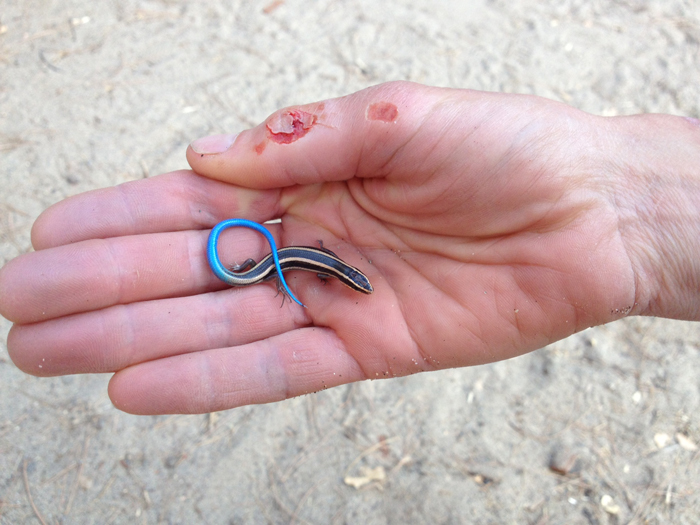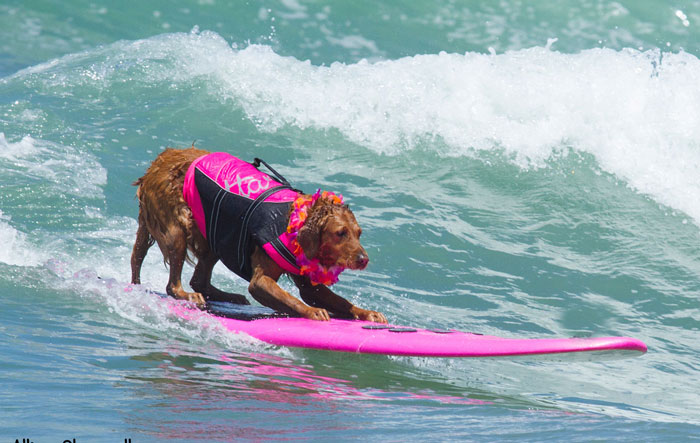- Paddling My Own Canoe - 10/01/2018
- West Coast Board Riders Club - 10/01/2018
- Never Too Oldfor Gold - 07/29/2018
Preventing kayak injuries
By Haven Livingston

The author, Haven Livingston, running one of the many falls at Kanawha waterfall in West Virginia (Phil Boyer).
WHITEWATER KAYAKING is not known to be the gentlest sport on the body. It’s closer to full contact rugby on a full speed treadmill with huge obstacles thrown in the mix. It sounds brutal, but the joy and love of the river far outweigh the risk for paddlers. From broken teeth and backs to dislocated shoulders and chipped elbows, if I haven’t experienced it first hand, I’ve had a friend who has. Without dedicated attention it’s easy to get hurt. With some forethought and good practice, kayaking does not have to result in a trip to the emergency room.
Just like any other sport, kayaking has its own set of common injuries. Not all can be prevented – there is some degree of “pay to play” – but there is a lot you can do to reduce the risk. Three general categories of prevention include preparation, equipment and judgment.
Preparation includes strength and flexibility training and properly warming the body up before paddling. Take a ten-minute walk and loosen the joints before paddling but save the deeper stretching for afterwards. The root of a paddle stroke initiates in the torso and continues through the shoulders and arms, so building core strength is key. Good paddling technique reduces strain on the shoulders and lowers the chance of a dislocation while strength training and physical therapy for the shoulder will help keep it in place. Switching the side you carry your boat on every time you pick it up maintains a balanced strength – and prepares you for those portages where you are forced to carry on only one side.
It’s easy to see why back pain nags at many paddlers when we’re crammed into a tiny cockpit and dropping down rapids in a seated posture. Outfitting the inside of the boat with supportive foam helps maintain good posture and reduce fatigue from body position stress. It also eliminates pinch points that make your feet go numb. Once a paddler begins to “huck waterfalls,” as we say, or make drops from any height, it’s crucial to train the upper body to come forward over the boat to avoid taking an impact from an upright seated position. Landing with bad body position will at the very least send shock waves through the spine and at worse will break your back by compression.

Stretching it out after a long day on the South Fork Salmon, Idaho (Phil Boyer).

Working on torso rotation after a paddle on Green River, North Carolina (Haven Livingston).
Protective equipment starts with the right size boat, paddle and gear that fits your abilities and size. I’ll be the first to tell you that even the most expensive full-face helmet is still cheaper than dental work. Your face is priceless.
An ill-fitting boat will add a constant strain to the body that may not show up for days or weeks but will accumulate into great discomfort. Eventually getting in your boat will sound like a chore instead of fun until your ride is properly pimped.
To alleviate wrist strain and elbow tendonitis try out paddles of different length, blade size and straight or curved shafts. A smaller blade will put less strain on the arms and shoulders. Kayaking is definitely a combat sport with bumps against rocks and other boats. External hard-shell biking guards that cover the elbow and forearm are nice because they offer a durable surface to bounce and slide off of rocks without damaging a dry top. Lower profile gel pads that mountain bikers use can slide on under or over a dry top and are less bulky, but will still prevent a chipped elbow from impact.
Good footwear is the most commonly overlooked item by newer paddlers. They think, ‘my feet are in my boat so why do shoes matter?’ The second you step out of your boat you are going to be in a wet slippery environment that is usually rocky and steep. Slips and falls are the leading cause of ankle and foot injuries on the river. Solid sticky soled shoes are a must-have. Neoprene booties just won’t cut it. Not to mention that if you take an unintended swim out of your boat a high top shoe with laces will stay on your feet and protect the ankles.

When an ill-fitting helmet rebounds into your face (Haven Livingston).

Brian Ginsberg reconsiders his helmet choice after a run down Fordyce Creek (Brian Ginsberg).
On the judgment side of injury prevention, it’s all about analyzing your skills vs. the reach of river you want to run. Once you’re on a new run or rapid, there’s little chance of turning back. Reduce the risk of getting in over your head by getting the beta beforehand to make sure it’s a run you are ready for. If you’re not sure, ask a few friends who know your paddling level. But beware those who just say, ‘you’ll be fine, follow me.’ Those are known to be friendship ending words. Having the proper safety gear is only as good as your knowledge to use it and having a crew who knows how to work as a team. Being a beginner isn’t an excuse to pass the buck to a more experienced paddler. If you’re good enough to make it down a river, it’s time to take a rescue course. Contrary to common sense, harder whitewater does not equate to more injuries. Most injuries happen on “easy” sections where people let their guard down. So, pay your dues or pay attention!
In the end you’ll have only yourself to answer the question, ‘is it worth it?’ And when you look back at all the sparkling diamonds of water flying in the summer sun and the exhilaration of bouncing down the rapids you will think, ‘indeed it is.’

When your hand gets between a rock and a hard boat (Haven Livingston).












